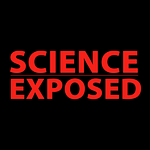In this episode of Science Exposed, we dive into the revolutionary world of graph-based AI models. Developed by MIT’s Professor Markus Buehler, this cutting-edge technology bridges seemingly unrelated domains—like Beethoven’s symphonies and biological tissues. We explore how abstract art inspired the creation of groundbreaking mycelium-based materials, balancing strength, adaptability, and sustainability. This method leverages category theory to unveil hidden connections, mapping the future of interdisciplinary innovation. Join us as we uncover how AI is transforming science, art, and technology, unlocking potential in material design, bioengineering, and beyond.
REFERENCE:
Accelerating scientific discovery with generative knowledge extraction, graph-based representation, and multimodal intelligent graph reasoning. Markus J Buehler 2024 Mach. Learn.: Sci. Technol. 5 035083. DOI 10.1088/2632-2153/ad7228. https://iopscience.iop.org/article/10.1088/2632-2153/ad7228
Content curated by: Dr. Cameron Jones, PhD
Public Health Expert, Fungal Biologist, and Science Communicator
CEO of Biological Health Services, a consultancy and lab specializing in indoor air quality.
Adjunct Faculty at the National Institute of Integrative Medicine, Australia.
Founder, BioMedix & House of Pot, Bangkok
For more insights on public health and cutting-edge research, visit drcameronjones.com and drcameronjones.tv
This podcast is part of an innovative science communication initiative powered by Google’s Notebook LM, an AI-driven tool that helps bring complex research to life by creating dynamic conversations and easily digestible summaries. Stay tuned for more engaging discussions at the intersection of science, health, and wellness.





